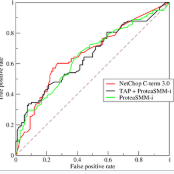This study investigates the effectiveness of Explainable Artificial Intelligence (XAI) techniques in predicting suicide risks and identifying the dominant causes for such behaviours. Data augmentation techniques and ML models are utilized to predict the associated risk. Furthermore, SHapley Additive exPlanations (SHAP) and correlation analysis are used to rank the importance of variables in predictions. Experimental results indicate that Decision Tree (DT), Random Forest (RF) and eXtreme Gradient Boosting (XGBoost) models achieve the best results while DT has the best performance with an accuracy of 95:23% and an Area Under Curve (AUC) of 0.95. As per SHAP results, anger problems, depression, and social isolation are the leading variables in predicting the risk of suicide, and patients with good incomes, respected occupations, and university education have the least risk. Results demonstrate the effectiveness of machine learning and XAI framework for suicide risk prediction, and they can assist psychiatrists in understanding complex human behaviours and can also assist in reliable clinical decision-making.
翻译:这项研究调查了可解释的人工智能(XAI)技术在预测自杀风险和查明这种行为的主要原因方面的有效性;数据增强技术和ML模型被用于预测相关风险;此外,Shampley Additive Explectations(SHAP)和相关的分析用于预测变量的重要性;实验结果表明,决策树(DT)、随机森林(Random Forest)和eXtre Seatical Agrative(XGBoost)模型取得了最佳效果,而DT的精确性能为95:23%,Curve(AUC)区域为0.95.5, 愤怒、抑郁和社会孤立是预测自杀风险的主要变量;收入良好、受尊重的职业和大学教育的病人风险最小;研究结果表明机器学习和XEAI自杀风险预测框架的有效性,它们可以帮助心理医生了解复杂的人类行为,也有助于可靠的临床决策。</s>



